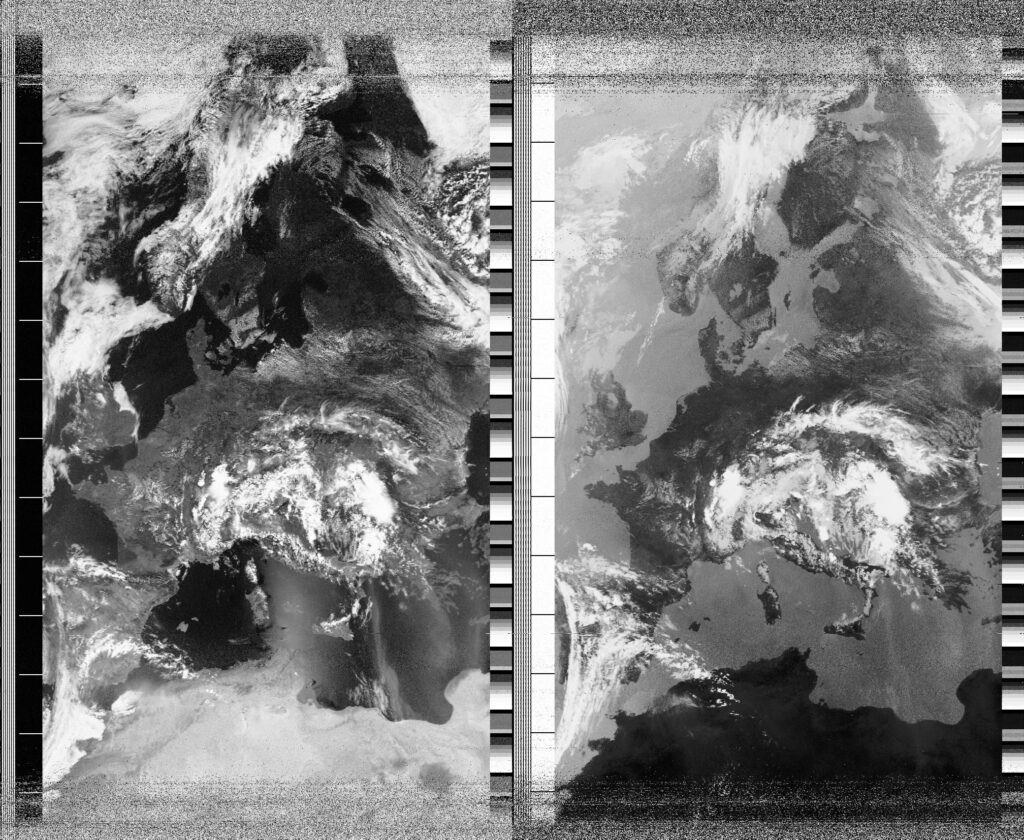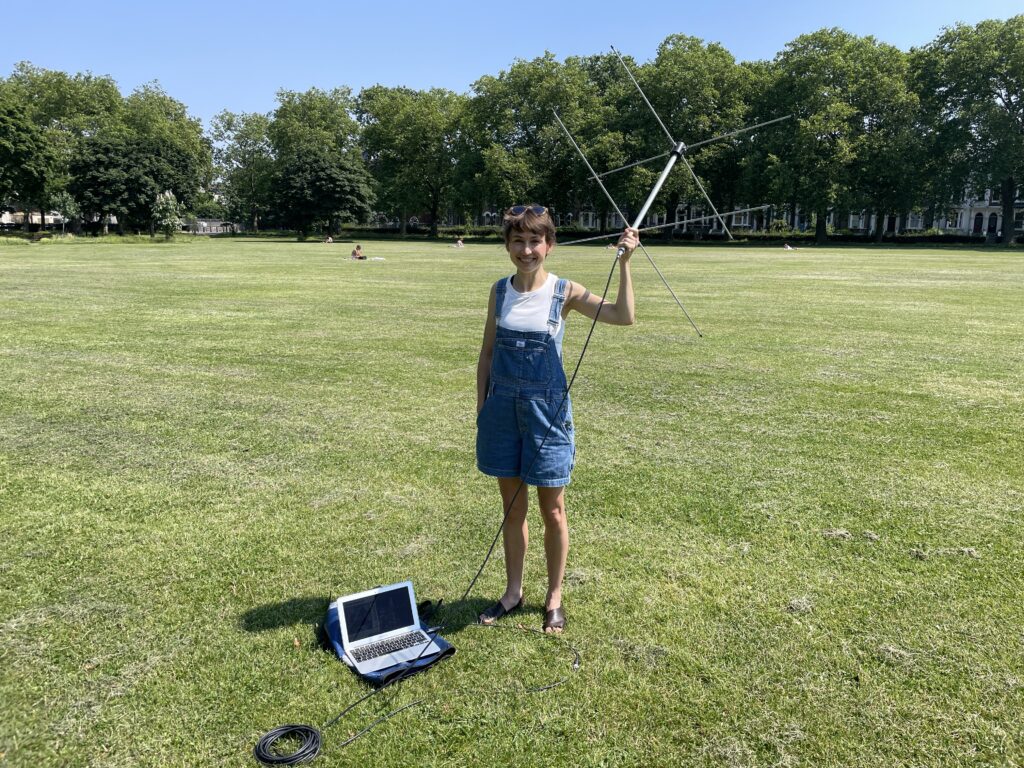Local Date
26 June 2024Local Time
11:22Location
Hackney Downs, LondonCountry or Territory
United KingdomContributor
Sasha EngelmannSatellite
NOAA-18Radio Callsign
Archive ID
Coordinates
It's a hot, hot, hot day in London. People are bravely tanning on the grass in the park, though I imagine some might be roasting. The moment T and I wake up, we open all the windows in our second floor flat. T says, 'we need a storm'. I had brought out my turnstile antenna because, based on yesterday's image, I wondered if there might be more dust over the Mediterranean, and as the NOAA-18 pass was relatively low elevation (35 degrees to the East) I guessed I would see 'farther' than with my DIY yagi. Was Soph already 'seeing the dust', I wondered? As the pass got started, Nutmeg appeared suddenly, circling my ground station, and I turned around to see Bill and a woman walking toward me. Katherine had been briefed by Bill on my satellite ground station and open-weather, and complemented the project. We agreed that, 'you meet all sorts in this park' and 'you learn so much from chatting to people'. I mentioned my interest in seeing the dust, and Bill asked how many tons of dust actually travel in the air? Millions or trillions of tons? He spoke about an analysis he had seen about how long it takes mountains to erode into the rivers and the sea, and explained how scientists had measured weathering down the Colorado River by stringing a kind of line across it and taking many disparate measurements over time (I think). The takeaway was that it will take many millions of years for the mountains to return to the sea, but it will happen eventually! Bill asked whether my laptop was overheating, and I knelt down to hear the internal fan whirring at a high rate.They stayed a few more minutes before Bill said he needed to take Nutmeg to the shade. Later, remembering Bill's questions about dust, I read that "The Sahara is the largest source of aeolian dust in the world, with annual production rates of about 400-700 x 10^6 tons/year, which is almost half of all aeolian desert inputs to the ocean" (Wikipedia). That's 400,000,000 tons of dust per year. I wonder how much is airborne in any given 'dust' event. Or, phrase differently, how much air suspends the dust?

